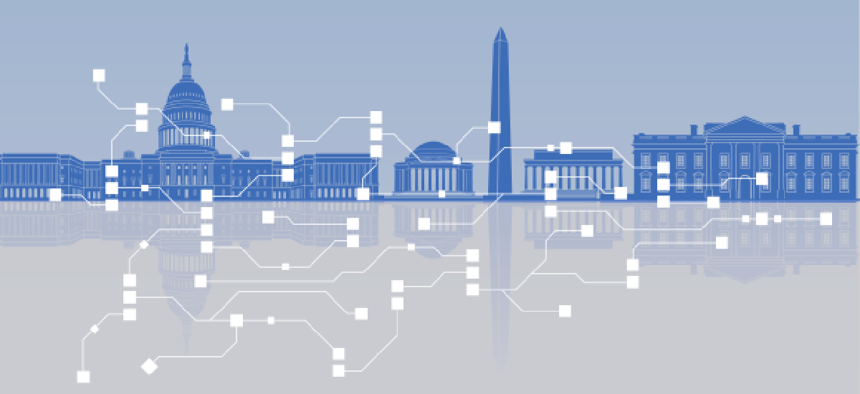The next link in the (block)chain


Connecting state and local government leaders
The Blockchain Playbook can help agencies move forward with development and deployment of the distributed-ledger technology for their specific use cases.
Agencies that want to take advantage of blockchain can have a hard time figuring out if technology can address their specific need or focus. To help them move forward with development and deployment of the distributed-ledger technology, the ACT-IAC Blockchain Working Group has released the Blockchain Playbook for the U.S. Federal Government. It is the group's latest effort to educate and guide government technology leaders on building a customized, agency-specific implementation strategy.
Released at the April 3 ACT-IAC Blockchain Forum, the playbook is describes three phases of a five-phase process of agency blockchain development: assessment, readiness and selection Details on two additional phases, implementation and integration, will be released in the future.
The first phase, problem assessment, covers how stakeholders and collaborators can determine if blockchain is appropriate to solve a problem. A short quiz helps agencies scope the problem they're trying to solve and determine whether blockchain's attributes – such as immutability, shared governance and its trust requirement – suggest a solution that cannot be addressed with other technologies.
The playbook also has a list of best practices to follow as well as outcomes that should result from the assessment process. These include specific use case examples, documentation on stakeholders' roles, business friction points and a list of regulations that apply to each of the use cases.
Phase 2, organizational readiness, establishes the goals of the blockchain project and identifies all participants. Preliminary guidelines outline what needs to occur during the readiness phase, including setup of a blockchain program management office, identification of the scope of blockchain services and processes and establishment of risk management processes. Existing systems must be assessed for integration and key performance indicators evaluated.
The readiness phase assures all stakeholders that they have determined initial business capabilities, the scope of services, a change management strategy, a proposed risk management plan and a procurement plan. By the end of Phase 2, agencies should be able to make a decision on whether or not to proceed with the blockchain project and the governance and management strategy for the proposed system.
Phase 3, technology selection, requires stakeholders to examine their business considerations, technical requirements and the procurement options.
To address business requirements, agencies should map out control and governance related to the software platform, determining whether to use a public, permissioned or private blockchain network, requirements for digital assets protection, transaction costs and requirements for data on the chain. Operating costs and security requirements should also be factored in.
One of the goals of the playbook is to make it easier for agencies to work together.
“We have a lot of cultural barriers that need to be broken down to explore opportunities,” said Sherri Sokol, innovation leader at the Defense Information Systems Agency. “We need to take down barriers with emerging technology at its fullest, and we have created an internal community of practice for blockchain to work and be able to change with the industry.”
Sokol wrote the introduction to the playbook and is leading efforts to educate Defense Department officials on blockchain. DISA is in the early stages for two proof of concepts related to identity and asset management, Sokol told GCN. “We want to see how blockchain could be used in these environments.”
“We have cloud environments that are able to talk with each other … without needing my guidance,” said Mark White, principal at Deloitte’s Innovation Office. Interoperable blockchain platforms will make it easier to design complex business practices for government agencies.
Former Federal CIO Tony Scott pointed to the General Service Administration’s blockchain proof of concept to automate the FASt Lane process for IT Schedule 70 contracts as an example of using the technology to benefit multiple agencies.
“The Schedule 70 example is creating something that agencies would have the ability to take advantage of right away rather than doing work at each agency,” Scott said. “Getting the federal government to do anything as a whole is hard, so we need to leverage examples and use it as lubricant on the flywheel to get stuff going.”
ACT-IAC’s playbook is the second deliverable of the group’s strategy to explain blockchain to a federal audience. In October, the group released a primer, Enabling Blockchain Innovation in the U.S. Federal Government, to explain how the technology works and some key challenges that agencies must solve.
The blockchain playbook can be found here.
NEXT STORY: CUI compliance: The proxy approach




